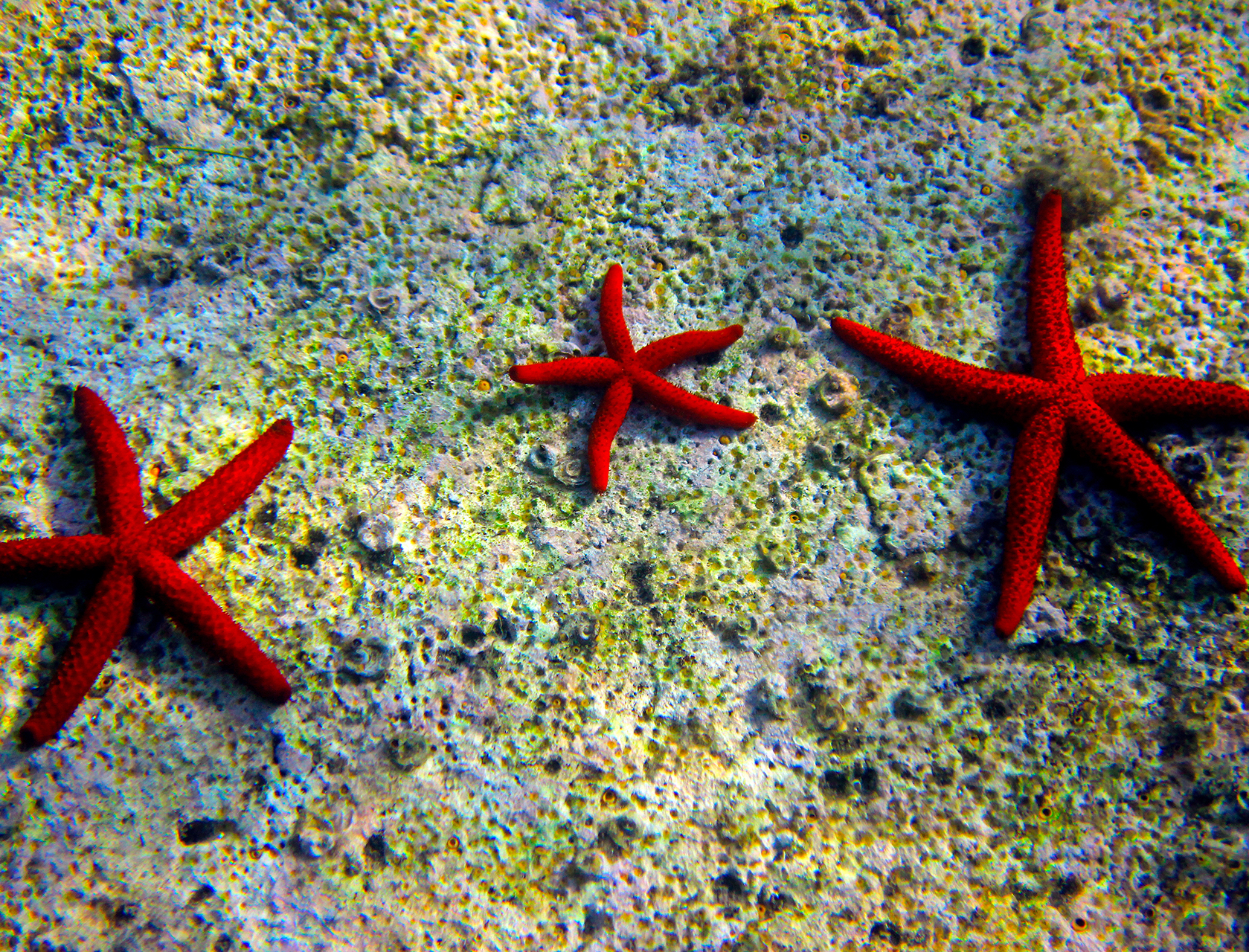It is an asteroid. However, it does not belong to the sky, but to the depths of the sea. Like any other benthic organism, it spends almost all of its life on the seabed, whether it is composed of sand, debris or rock. And in the green of the long leaves of Posidonia stands out, with the color that distinguishes and identifies it, the red starfish or, according to its scientific name, Ephinaster sepositus.
Among the approximately 1,500 species of starfish present in all the seas of the world, it is the most widespread and common in the Mediterranean, its reference area in addition to the North Atlantic. Although it prefers coastal environments, the red starfish lives between a few centimeters and 200 meters deep.
An echinoderm invertebrate, the red starfish has the typical five arms, which surround the central, rounded part of its body, where the vital organs are enclosed. Overall, including the arms, it can reach thirty centimetres in diameter. In the centre, on the lower side in contact with the seabed, is the mouth, which corresponds to the anus on the upper side. All around the mouth is a nervous ring from which the radial nerves originate. They run along the ambulacral canal with which each arm is equipped and which allows it to move both autonomously and in coordination with the other arms. The ambulacral canals, which are equipped with cilia on the lower part of the arms, contain hundreds of ambulacral pedicels with suckers, thanks to which the animal is able to adhere to the seabed. Among the fundamental functions of the pedicels are also breathing and the tactile ability of the starfish.
The complex ambulacral system of the starfish is a hydraulic system: the canals, in fact, are full of water and the pedicels are able to extend outwards when they also fill with water. At that point, adhering to the substrate with the suckers, they contract and make the starfish move. This hydraulic system is very delicate and goes haywire as soon as the starfish emerges. Therefore, it is necessary to avoid keeping it out of the sea even for a very short time. Also because air bubbles can form in the canals, causing even lethal embolisms.
At the end of the arms are eyes, which allow the animal to distinguish between light and shadow.
The surface of starfish is also very delicate. The bodies are protected by a gelatinous film that covers them and protects them from infections and contamination. This is why you should not touch or manipulate starfish, as you risk ruining the protection and damaging the ambulacral pedicels.
Like all echinoderms, starfish have bodies covered with limestone plates. Therefore, even the Ephinaster is not uniform, because especially on the arms there are numerous, small depressions of a darker color than the rest, while the pedicels are orange.
Like all species of the Asteroidea class, red stars are carnivorous and feed mainly on sponges, worms, small bivalves and gastropods. Once the prey has been identified thanks to its pedicels, the star covers it and opens its shell with its arms. Then the star everts its stomach from its mouth into which it introduces, with the help of the cilia of the ambulacral canals, the parts of the "victim", which it digests immediately, before reintroducing the stomach inside its body, again through the mouth. By feeding, stars perform an important ecological function of regulating, in the habitats in which they live, the density of the populations of the preyed species.
On the other hand, there are very few enemies of stars. The most voracious and aggressive is the giant Triton (Charonia tritonis), which is very fond of them and helps to keep their spread under control.
It can happen that stars, for various reasons, lose a part or an entire arm, which quickly reforms. Like other damaged parts of their bodies. This ability to regenerate also plays a role in the reproduction of stars, which can be asexual, as in this case, or sexual. In the first case, from lost limbs other stars are formed, with the formation of the missing parts.
Sexual reproduction, on the other hand, occurs between spring and summer, when the stars that live in different areas gather in large numbers: the females expel large quantities of dark red eggs into the sea and the males take care of fertilizing them. From those gametes dispersed in the water column, small larvae are born within a day. They are transported by the sea and feed on plankton. In a few days, their arms form and from that moment the small stars move to the seabed, where they will continue their life. It has a different duration depending on the species. The red star is among the longest-lived, since it can reach seventy/eighty years.
A valuable indicator of biodiversity and the health of the sea, stars are declining in some areas and there have even been real epidemics that have decimated some populations. The greatest risks are linked to marine pollution, fishing and climate change: the increase in sea temperature certainly disturbs animals that can tolerate temperatures up to 22 degrees. Therefore, in addition to specific studies, in some Marine Protected Areas stars are the protagonists of specific repopulation projects.




